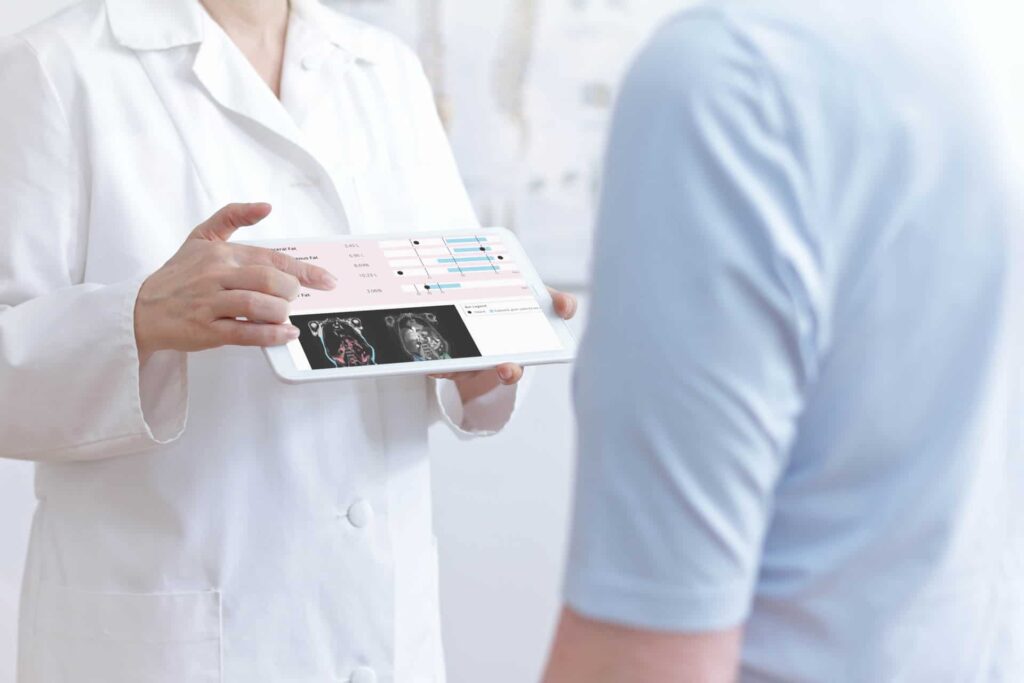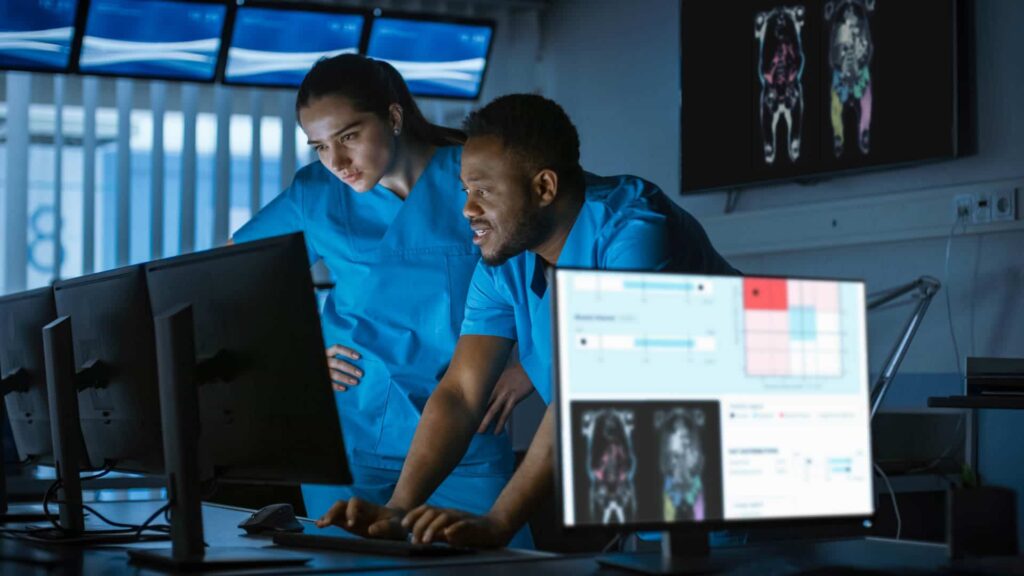
Why It Matters
Better Data Facilitates Better Outcomes
Whether you are a researcher or a clinician, you use data everyday to guide your decision-making—impacting your clinical trials and patients’ lives.
Imagine being able to
- Select the ideal therapeutic intervention for every patient, every time
- Detect or predict disease and disease severity earlier and with confidence
- Clearly phenotype and stratify patient cohorts for your study or intervention
- Identify non-responders to treatments or drug candidates earlier
- Closely monitor the natural aging process or disease progression
Here at AMRA, we believe this is possible with the right tools and accurate data, and we are dedicated to developing and delivering these tools and data to you.

Muscles Tell Us Important Information—We need to be able to detect that information
Our muscles change over time—both in volume and composition—depending on various factors such as age and disease. Muscle composition biomarkers allow for closely tracking muscle health, sarcopenic processes, and the manifestations of disease on the muscles at an early stage before the advent of frailty as detected by functional tests.
Fat Distribution Matters
Using measurements like body mass index (BMI) that categorize people into broad categories, or even simply describing individuals as having high liver fat and low liver fat often end up grouping individuals with little resemblance to one another in terms of health and disease.
Specific fat distributions have been significantly linked to adverse health outcomes, something that other body composition methods, such as DXA, single-slice CT/MRI, and BMI, fail to accurately describe.
With our MRI-based method for assessing body composition, we can reliably and precisely view and quantify fat distribution within an individual and individual muscles.
It’s not the fat, it’s where it’s at. (National Geographic, January 2019)

A detailed understanding of body composition is vital for identifying and tracking health, metabolic status, diseases, and overall fitness.

Detecting and Monitoring Heterogeneous Diseases is Possible
Complex diseases, such as neuromuscular disorders, often present differently between people and between disease stages within an individual—making it difficult to know which muscles to evaluate or monitor for each person.
Conventional imaging methods only look at certain body parts, or parts of single muscles, which can create a false idea of what is actually going on inside the body. AMRA looks at the whole-body and at whole muscles—nothing gets missed.
MRI in Neuromuscular Disorders
Muscle fat content is associated with muscle function in neuromuscular disorders (NMD), and changes in muscle fat content precede changes in function. To detect NMD earlier and monitor disease closely, we need to be able to detect changes in muscle fat content before functional decline. Quantitative magnetic resonance imaging (MRI) of muscle may offer this opportunity, as it is noninvasive and can be carried out almost independently of disease severity. Recent studies highlight muscle MRI as a strong biomarker candidate to predict prognosis and treatment efficacy in NMD, and AMRA is on the forefront of this effort.
Linking Fat Distribution and Metabolic Disease
Vast differences in body composition amongst those once thought to be similar, as well as connections between fat distribution or imbalance and disease, influence how patients respond to a treatment, whereas others might respond poorly or not at all. “Body Composition Profiling in the UK Biobank Imaging Study,” published in Obesity, shows specific patterns of fat distribution linked to metabolic disease, specifically the presence of coronary heart disease and type 2 diabetes, in over 6000 subjects.
Research Highlighting Why Body Composition Analysis Matters
Sarcopenia and the Muscle-Liver Crosstalk
Recent studies highlight a connection between sarcopenia and chronic liver diseases—which can eventually progress to patients needing a liver transplant. Accurately assessing sarcopenia can help predict, diagnose, and monitor a disease, as well as help determine how a patient will respond to transplant.
Unfortunately, current muscle-based sarcopenia definitions fail to detect sarcopenia in many patients, particularly those with obesity, which is overrepresented in NAFLD (non-alcoholic fatty liver disease). Until recently, the skeletal muscle-liver crosstalk and the impact of treatment interventions on skeletal muscle have been largely overlooked in the research for NAFLD treatments.
Listen to our Muscle-Liver Crosstalk webinar, where experts in liver and metabolic diseases, and imaging, discuss the latest research on how to assess and monitor sarcopenia in chronic liver disease. Click the button below.

Let’s talk
Tell us how you are using MRI for body composition analysis and let’s power the future of medicine together.
This site is protected by reCAPTCHA and the Google Privacy Policy and Terms of Service apply.